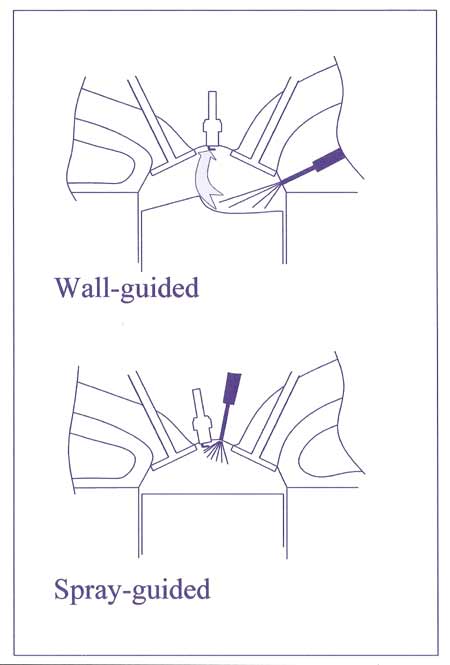Directly so
It has often been said that 'racing improves the breed'. While this may have been true half-a-century ago - the development of the disc brake perhaps being one example - these days the thrust of new technology is definitely the other way around, and there's no finer example of this than the growing use of direct injection in the gasoline engine. But while the roadcar boys need it for the extra control it affords - primarily in the operational areas of 'cold start', fuel economy and regulated exhaust emissions - in racing it is mainly about performance.
Unlike port-injection systems and the much-lamented (by some) carburettor, direct injection gives complete independence of control of the metering process for both air and fuel. In port-injected systems, part of the injected fuel would land on the walls of the intake manifold or port, and this 'tau' effect could sometimes produce a lean or rich 'spike' during transient engine conditions. By injecting the fuel directly into the combustion chamber, similar to diesel engine practice, not only is this transient condition improved but the displacement effect of the fuel in the intake charge and the improved cooling effect of all the fuel evaporating inside the cylinder (as opposed to in the intake manifold and port) gives better volumetric efficiency.
However, it is not quite that simple. In port-injected systems introducing fuel and air together, controlling the turbulence thereafter and directing it towards the spark plug is well understood and relatively easy to achieve. In direct systems though, not only do we need to understand the flow of the air inside the chamber but also the movement of the fuel during the injection process in order for it to mix with the air and, when directed to the spark plug, burn efficiently.
One way of getting the correct fuel-air mixture to the spark plug is to inject it against the piston crown. Suitably shaped, and hot from the previous cycle of combustion, this so-called 'wall guided' technique evaporates the fuel injected onto the crown, and the tumble of the air in the cylinder takes the charge upwards to the spark plug. Mounted low down and often underneath the intake port, the injector fires the fuel obliquely across the cylinder towards the piston crown as it rises. Shaped piston crowns and hence heavy pistons, together with the limited time in which the piston is in the correct position, make this less desirable for ultimate performance, but access issues in locating the injector around the combustion make this a slightly easier prospect.
When designing a new cylinder head and combustion chamber, the preferred injection method is that of the spray-guided system. This method uses a significantly different approach. Mounted centrally high up in the chamber and next to the spark plug, in spray-guided systems the distance between the injector and the spark plug is very small. Since the fuelling and point of ignition are close together, the charge motion before ignition is of less importance, and instead the ability of the injector to produce well-atomised sprays of a wider angle than those strictly necessary for wall-guided methods is perhaps more important. Furthermore, using lighter pistons and opening up the injection timing window (in not having to wait for the piston) is also an advantage.

Although the straight eight-cylinder Mercedes-Benz M196 of 1955 may have used direct injection, it was not until 40 years later that the technology in gasoline engines is coming back to the fore. With DI allowed in Formula One as of 2014, let's see if racing can take over the mantle and move the technology on.
Fig. 1 - Wall-guided and spray-guided injection
Written by John Coxon